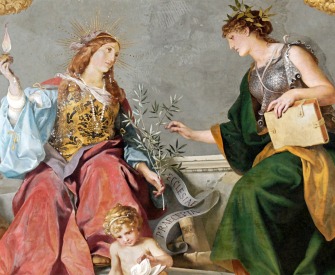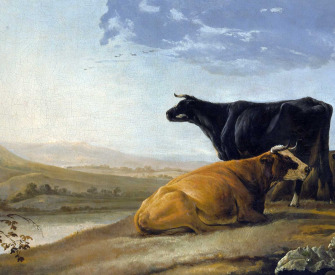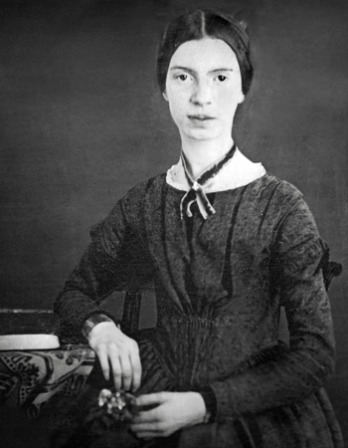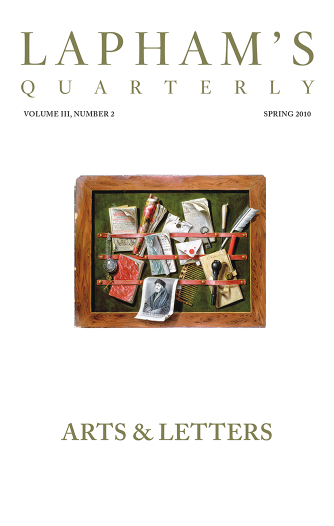Those things are better which are perfected by nature than those which are finished by art.
—Cicero, 45 BCThe Art of Nature
Human art, fiction, invention, and technology are not unnatural forces that have suddenly erupted into nature, but rather the natural continuation of nature’s own evolutionary processes.
By Frederick Turner

Plums and Apricots, by Emilie Preyer (1849-1930), date unknown.
When European settlers first moved from the East Coast out into the great hinterland of North America, they believed that what they saw was nature. Jasper Cropsey, Thomas Cole, Frederic Church, and Albert Bierstadt painted their grand mystical visions of a landscape unsullied by mankind, and it is that pristine picture which has stuck ever since.
Of course, the settlers were wrong. It was in fact a landscape that had already been tailored by Indian nations to fit very specific lifestyles and satisfy religious needs. Like bees scattering pollen, the Indians had carried seed across the continent and bred wild teosinte into tender corn. If the first humans had not crossed the Bering land bridge over ten thousand years ago then much, perhaps most, of the prairie would have been deciduous oak and beech forests. Thoreau, on the other hand, who puttered about Walden for long enough to see what was under the surface, knew well that the “wilderness” in which he lived had been farmed and dwelt upon by earlier peoples. What he probably did not know was the reason they were no longer around: as many as nine-tenths of the natives had been wiped out by European diseases brought over by the Spanish nearly four hundred years before.
The point here is not another postcolonial rant about the crimes of the West, but rather what we mean by nature and what our conception of ourselves as humans in relation to it really is. If we define natural as that which is not human, denying that our species emerged as the result of a naturally occurring process, then we resemble the creationists who want school boards to ban even the teaching of human evolution. We did not suddenly supervene upon this planet by divine intervention. It is far more miraculous that we emerged, and are still emerging, from the matter, energy, and information of the world. We owe our humanity to our power of speech just as the elk derives his identity from his antlers, each species responding to the peculiar demands of their environments. Man himself grew up out of the earth. After all, “Adam” means “red clay.” If we do decide to define man as natural but classify our social and cultural creations as artificial, then we subscribe to the idea that humans are only natural in isolation. This is a theory that all the human sciences—anthropology, psychology, paleoanthropology, linguistics, ethnology—emphatically reject.
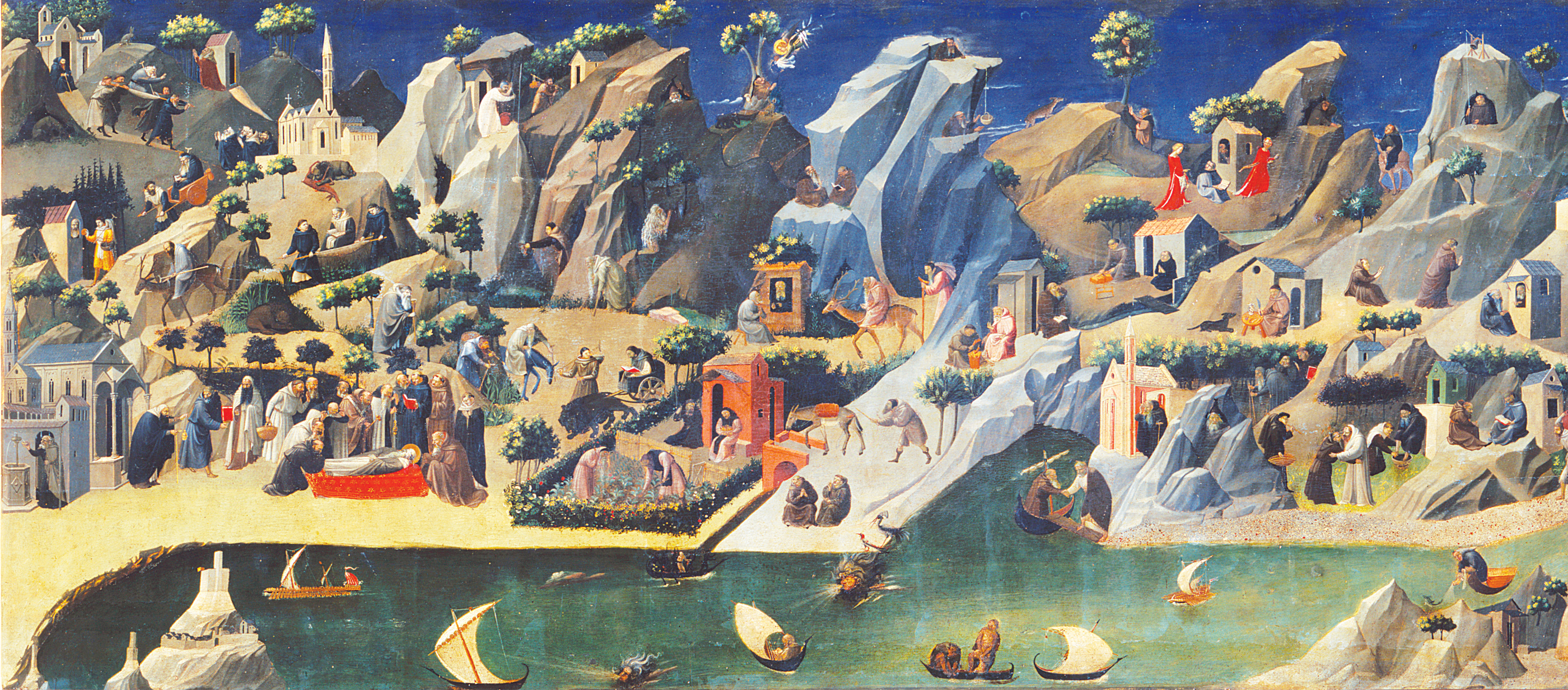
The Thebaide, by Fra Angelico, c. 1420. Uffizi Gallery, Florence, Italy.
As the great bacteriologist Lynn Margulis has pointed out, we are part of an immense web of earthly life. We are ourselves made up of a collection of ancient bacteria, protists, and viruses that have been consolidated mostly—but not entirely—into our genes, expressed as organelles and ingenious chemical machinery, and still freely exchanging snippets of DNA and RNA with other organisms. Then again, if we say that everything is natural, including anthropogenic global warming, modernist art, and Hiroshima, then what becomes of our tendency to value the natural and revere nature? And if the word refers to everything, is it any use at all?
All societies, the anthropologist Claude Levi-Strauss tells us, distinguish between nature and culture, the raw and the cooked. The philosophical, moral, and aesthetic dimensions of the distinction, however, differ profoundly from one society to another. Indeed, one might almost categorize societies in a way that would nicely cut across the usual economic, technological, and historical divides solely by the content of their nature/culture distinction. Are emotions natural or cultural? Is nature “good” and culture “bad,” or vice versa? Is nature dynamic and culture static, or the other way around? Is nature self-aware and culture innocent? Is nature personal and culture collective? Different societies emphasize different distinctions, and the conflicts within all cultures consist to a large extent of a struggle over the strategic definition of these words.
There is a wonderful exchange on the difficulty of defining nature in William Shakespeare’s The Winter’s Tale. The shepherdess Perdita (who is actually a foundling foreign princess, though she does not know it) holds a rustic feast to celebrate a successful sheep-shearing. Perdita loves Florizel, prince of the realm, who has come to the event in disguise so that he can court her, against the wishes of his father King Polixenes. Polixenes, not wishing his son to marry a mere commoner, has also disguised himself in order to attend the feast and observe the prince and his beloved together in hopes of breaking up the liaison. None of the major characters in the scene is actually what he or she seems to be.
Perdita, who according to custom has given flowers to her guests as befit their age and station in life—spring flowers for the young, summer flowers for the mature, and so on—greets her distinguished-looking unknown guest courteously. Like young people in any century, Perdita thinks that anyone over forty is old, and so she gives Polixenes flowers befitting his age. The rather amused king gently teases her for his symbolically septuagenarian flowers, and Perdita excuses herself on the grounds that she doesn’t have the appropriate late-summer flowers to give him:
Perdita
Sir, the year growing ancient,
Not yet on summer’s death, nor on the birth
Of trembling winter, the fairest flowers o’ th’
season
Are our carnations and streaked gillyvors,
Which some call Nature’s bastards; of that kind
Our rustic garden’s barren; and I care not
To get slips of them.
She refuses to grow the gaudier late-summer and early-fall flowers, hinting that there is something improper in their ancestry. “Slips” are cuttings from which new plants can be propagated or cloned. Polixenes pursues the matter, intrigued by Perdita’s evident discernment, eloquence, and strength of mind with regard to the habits of procreation.
Polixenes
Wherefore, gentle maiden,
Do you neglect them?
Perdita
For I have heard it said,
There is an art, which in their piedness shares
With great creating Nature.
Perdita now raises one of the perennial questions of philosophy. She objects to the art of selective breeding and hybridization by which Renaissance horticulturalists transformed simple wildflowers into elaborate multicolored blooms. Like an ardent advocate of environmental purity in our own time, she is suspicious of artificial interventions into nature; “great creating Nature” is for her a goddess, like the Gaia of our own New Age philosophers. There is perhaps also a further unconscious thought lurking in her mind: she has just been worrying about her own presumption in entertaining the amorous advances of a prince, whose blood and breeding are so far above what she imagines her own humble origins to be. She is embarrassed about the fine clothes she wore for the feast and about the rustic garments that her lover Florizel donned in order to woo her without revealing his princely identity. Nature and human art should not mix, nor should commoners and nobility; if they do, appearances become deceptive and things will not be as they seem. Perdita is innocent and honest—she dislikes adulteration and deceit. She defends her decision not to cultivate the carnations and gillyvors on the grounds of a personal code of sincerity:
Perdita
I’ll not put
The dibble in earth, to set one slip of them;
No more than were I painted, I would wish
This youth to say ’twere well, and only therefore
Desire to breed by me.
Perdita dislikes the hybrid flowers because they use their artificially generated beauty to gain the advantage of being reproduced over their more modest sisters. It is as if she were to paint herself with cosmetics in order to make Florizel cultivate her with his “dibble” (garden trowel). But there are wider implications. If Perdita is right, art itself is a profoundly questionable enterprise. Indeed, the very art of drama that portrays the character of Perdita is a fiction. An actor plays her part—in Elizabethan times that actor would have been a gifted prepubescent boy—and so the whole enterprise is contrived. And even within this play, Perdita, albeit unknowingly, acts as shepherdess when she is, in fact, a princess.
Is this art or artifice? And what is art, anyway? For Shakespeare the word had a vast range of related associations, which had not disentangled themselves from each other. It could mean “art” in the contemporary sense of what we find in a gallery, book of poetry, symphony hall, or theater. But it also referred to skill or technique, and by extension to technology, machinery, and mechanical devices of all sorts. Art also meant magic, alchemy, and the mystical sciences of astrology and prognostication. It could be a humanistic discipline, as in “liberal arts.” It could also denote deceptive practice or cunning imposture.
Perdita’s reservations about art should be familiar to us now, since we are grappling with the implications of the scientific art of genetic engineering. Should we eat the genetically modified soybeans and wear the pest-resistant cotton undershirt? What about the rice infused with vitamin A or the experimental fruit flies with eyes popping out of their legs? We must balance the benefits of insulin and oil-eating bacteria against the devastating viruses devised in the laboratory; in vitro fertilization against the legal and familial difficulties that arise when the mother who gives birth does not share the child’s DNA; gene therapy to control hereditary diseases against eugenic plans to create a master race.
Shakespeare reveals that our current dilemmas are not new. We have been in the business of genetic engineering since we inaugurated the Neolithic agricultural revolution by choosing specific plants and animals to breed rather than others. The techniques of the white-coated biochemists who mix and match DNA are as “unnatural” as those of our ancestors who constructed beehives, developed brewer’s yeast, and bred corn—all the direct products of human tinkering. When we selectively mate a certain pedigree of dog with another that shares a similar genetic makeup, we are practicing species-wide eugenics. On our own level, when we choose an intelligent, caring, and attractive person to be our mate, we are engaged in our own form of eugenics. Even in our most natural acts we are already artfully intervening in the course of nature.
How may this contradiction between nature and art be resolved? Polixenes’ reply to Perdita reveals wisdom that we could do well to take to heart. Recall that she has just disparaged the gillyvor flowers on the grounds that an art went into their ancestry.
Polixenes:
Say there be;
Yet Nature is made better by no mean
But Nature makes that mean; so over that art
Which you say adds to Nature, is an art
That Nature makes. You see, sweet maid, we
marry
A gentler scion to the wildest stock,
And make conceive a bark of baser kind
By bud of nobler race. This is an art
Which does mend Nature, change it rather; but
The art itself is Nature.
As usual Shakespeare says it all. Perdita has already observed what Darwin noticed more than two hundred years later: changes in species can be brought about by selective breeding and hybridization—those primitive forms of recombinant DNA bioengineering. She doesn’t like it, but Polixenes refutes her with an eloquent argument in favor of human tampering. He takes up Perdita’s snide use of the word “art” and turns it around to include perhaps even the very dramatic medium that gives his character life. He insists that nature not only produced human art, but actively guides it as an instrument of creation. We are natura naturans, nature naturing.
The art of genetic engineering was itself created by nature. The plain ancestral gillyvors were already using their colors to attract bees to spread their DNA. They had the genetic potential to produce the gaudy streaks that attracted the eyes of men and women and persuaded human gardeners to propagate them. Humans, like bees, became a way for streaked gillyvors to reproduce and thereby to extend the diversity of their species by developing a new breed specially adapted to the environment of human culture. The gillyvor is by nature a plant that uses art, and humans are naturally art-using animals. We survived to reproduce because we had the capacity to create tools like sheep-hooks or dibbles and thereby breed domestic species like sheep or gillyvors for our own purposes. Moreover, our capacity to make fictions—to tell lies, put on disguises, stage plays, and enhance our looks by clothing or cosmetics—is likewise a natural talent, like the eagle’s to fly or the mole’s to dig. It is of a piece with our ability to express our thoughts in words, and to build families, tribes, and nations. It is as natural as the bee’s amazing dance, by which it mimics the journey to a food source for the swarm. Human art, fiction, invention, and technology are not unnatural forces that have suddenly erupted into nature, but rather the natural continuation of nature’s own evolutionary processes. In seeking to graft himself to Perdita’s stock, Florizel participates in nature’s mysterious capacity to grow and reproduce.
There is a further implication here concerning class. If shepherds are more natural, aristocrats are more sophisticated, refined, and artistic. Ironically, Polixenes argues that grafting is natural, yet he disdains his son Florizel, a cultivated prince, for wanting to marry a wild shepherdess. Polixenes uses metaphors of social class to describe the qualities of the gillyvors: “gentler,” “baser,” “nobler.” Even now we use Polixenes’ technical term “scion” (the cutting that is grafted to the stock) to refer to the offspring of illustrious families. Despite his opposition to his son’s lower-class love interest, Polixenes’ statements imply there is no necessary harm in marriages between the social classes. Shakespeare, of course, does not completely overturn the Elizabethan class system since The Winter’s Tale, as with most of his comedies, ends happily with a return to normalcy—Perdita’s true noble birth comes to light. The point remains, however, that Polixenes convinces Perdita that her hard-and-fast distinction between sterile, insincere art and creative, honest nature cannot hold up. Nature will accept the graft of the wild and the artificial: nature can be artistic, art can be natural.
For Shakespeare, the purpose of the living art of theater is to hold “the mirror up to nature,” revealing the truth of the world around us in the form of a fiction. This does not mean, of course, that untruths and disguises are always harmless. To the contrary—after all, Polixenes has disguised himself with the harmful intent of breaking up his son’s marriage, though his anger will later dissipate when he finds out that Perdita is exactly the kind of hybrid he has described—a princess by birth, cut off from her ancestral roots and grafted onto the stock of a peasant family. While deception in The Winter’s Tale is as dangerous as it is elsewhere in Shakespeare’s plays, it also enables Florizel and Perdita to escape the wrath of the king. There is nothing wrong in essence with contrivances nor are they unique to human society: the gillyvors mask themselves in order to be cultivated.
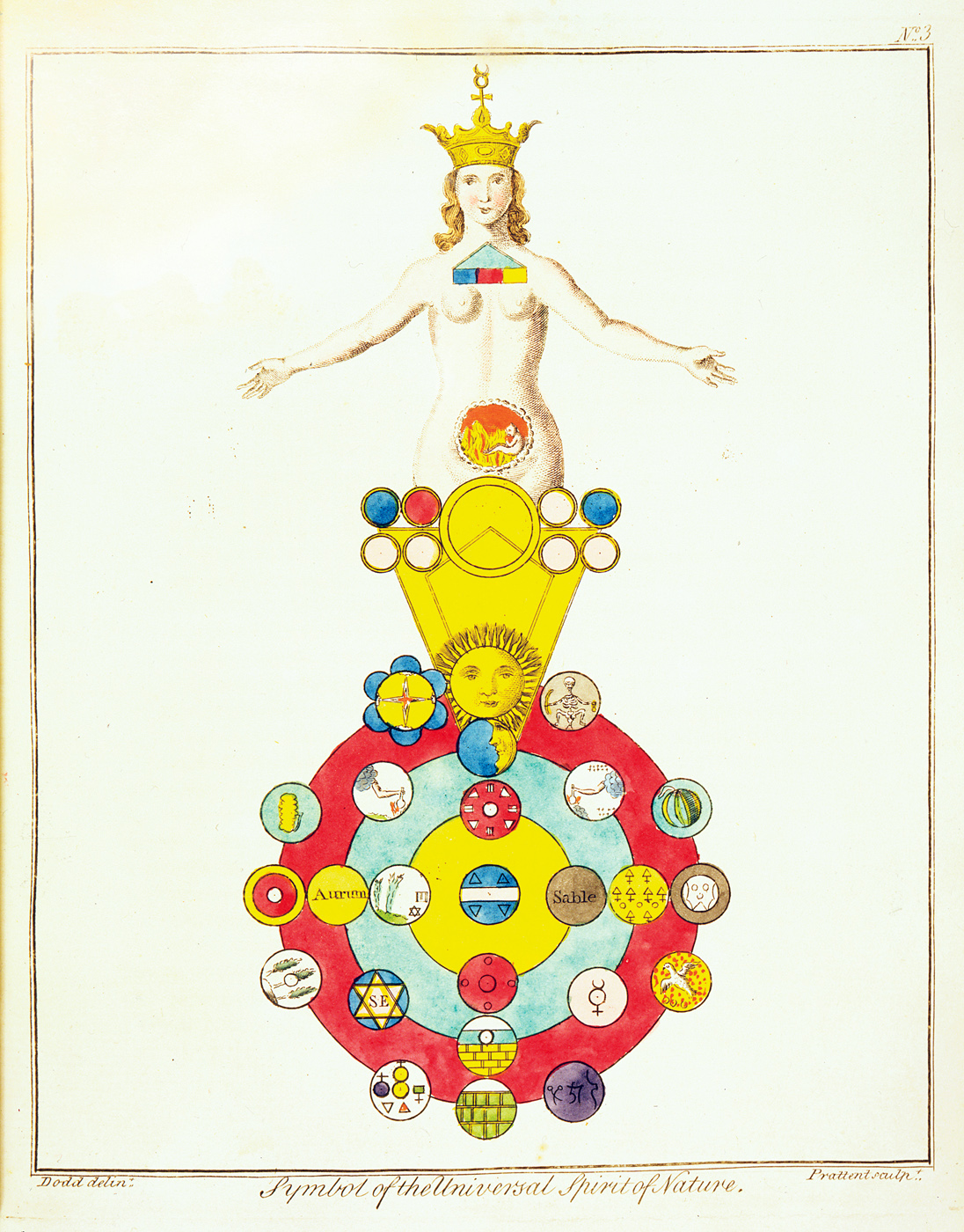
Illustration of the Universal Spirit of Nature, c. 1798.
It is no longer a matter of having to choose between the innocent, creative sincerity of nature and the sophisticated deceptions of art—a choice that would force us to abandon all the advantages of technology, consciousness, and language. Art and nature are one, and we must now use our moral and aesthetic judgment to choose between courses of action, not follow a simple formula that firmly distinguishes the artificial from the natural. Whatever decision we make will itself be part of nature, whether beneficial or destructive. When we choose to alter nature with technology—or when we choose to alter society with a new fiction—we should do so with the whole tradition of natural evolution in mind. We cannot abdicate the prerogative of choice itself with which nature has endowed us.
In an essay I wrote more than twenty years ago, I called for an American garden, a new tradition that would bridge the deep and damaging cultural gap in the American imagination between nature and humanity, the protected wilderness area and the exploited landscape. I now believe that one of the central features of that new tradition is already represented by the work of the ecological restorationists, like William R. Jordan III, who theorized on the exciting and visionary task of reconstructing, species by species on damaged and derelict land, the rich ecology of natural biomes. What capacity could be better adapted than our aesthetic sense to the complex work of environmental restoration? Our sensitivity to beauty helps us harmonize masses of mutually dependent information into an animate whole. Our destiny as a species now appears to be bound up with the success of our attempts to reconstruct the environment. We would be in a desperate case if the only capacity we could rely on was our logical ability to put two and two together—there is not enough time to work everything out in that fashion, and there is simply too much information, and too many possible consequences, to do it without those higher integrative abilities.
The cross-fertilization of environmental restoration with human talents has won some enemies. Detractors maintain that restoration—by defrauding us with a copy of nature in place of the authentic original—is no better than the art forger who sells us an imitation of a genuine painting. These critics clearly belong to the metaphysical camp of the Platonists, the classicists, and the idealists who believed that true nature is that which does not change. But the idealist ignores the fact that living things are already copies—constantly changing ones—and that their very metabolism consists of normal chromosome and cell division (mitosis) punctuated by the even more spectacular metamorphoses of meiosis and sexual reproduction. These processes are infinitely complex arts whose imperfections—mutations—create genetic variability and form the basis for all evolution. If the work that the restorationist imitates is not only a reproduction, but one that is also constantly duplicating itself, then the crime of forgery seems to be, paradoxically, more in the true spirit of the original than preserving it would be.
The bee that cultivates and propagates plants through artificial insemination is an old example of the proverbial “wisdom of nature,” and the dance whereby it directs its sisters to honey and pollen represents one of the most ancient forms of language. Nature sustains itself through the artful interventions of its creatures. We humans are also seed and pollen vectors, helping to circulate both our own genes and those of other species. Our existence and survival depend on this natural copying—an organic art form that has not only shaped the environment but also guides our efforts to transform it, whether tilling the earth to graft gillyvors or splicing genes to fashion new selves.
